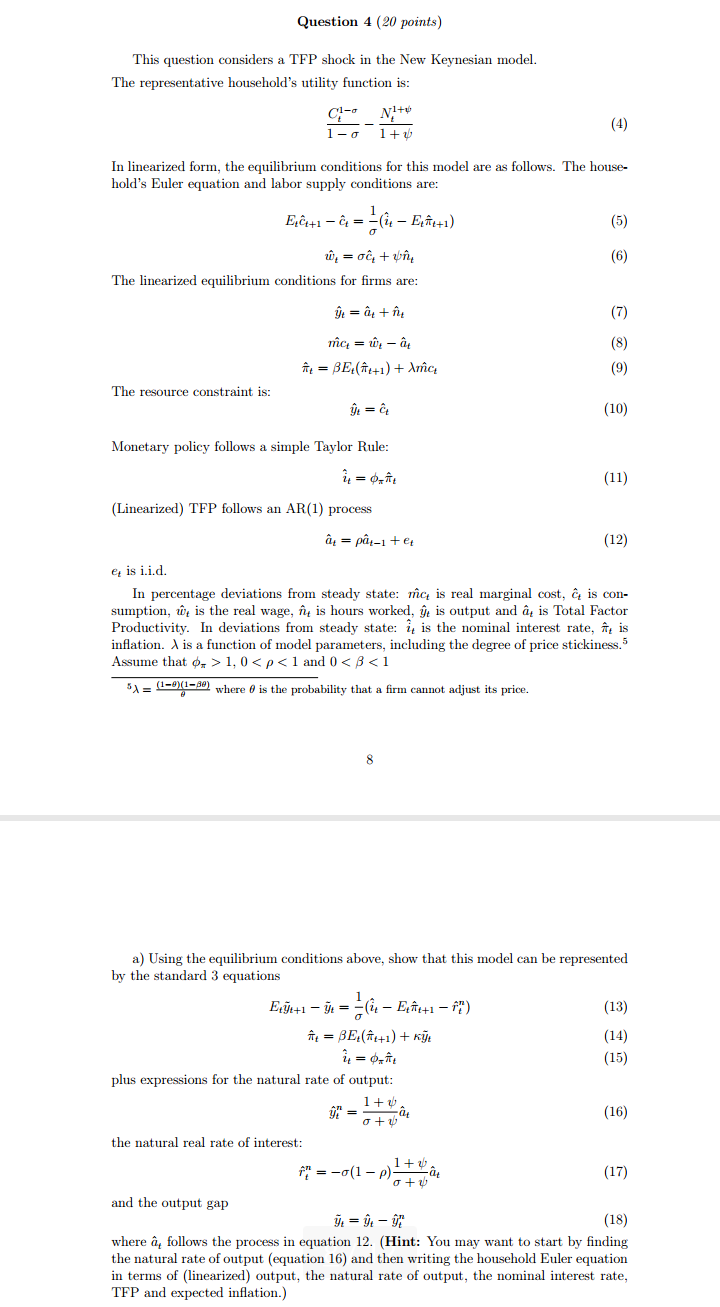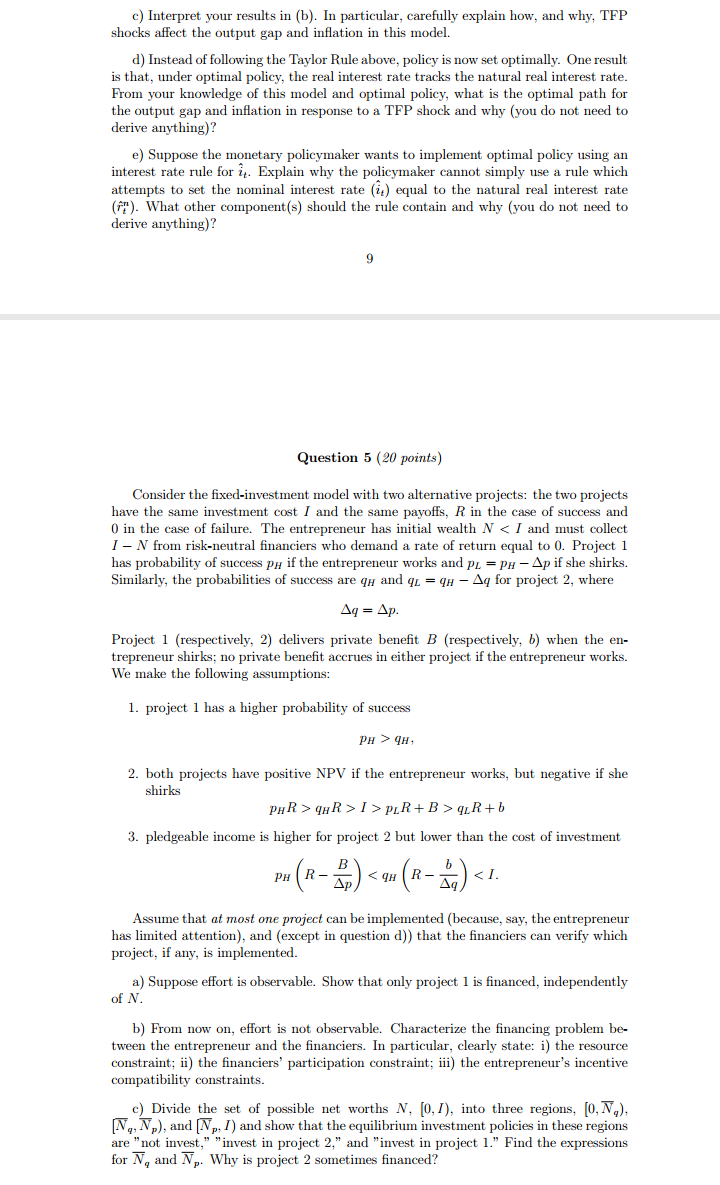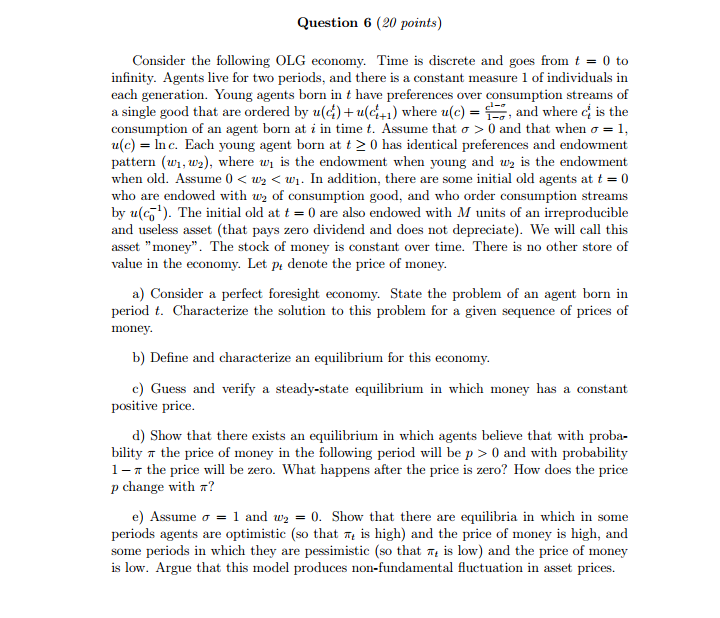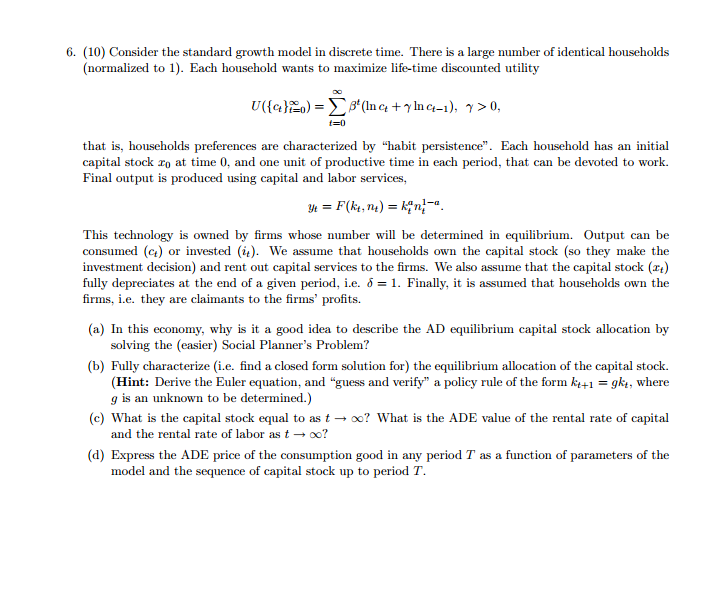



Macro,Help in solving the following....
Question 4 (20 points) This question considers a TFP shock in the New Keynesian model. The representative household's utility function is: (4) In linearized form, the equilibrium conditions for this model are as follows. The house- hold's Euler equation and labor supply conditions are: (5) (6) The linearized equilibrium conditions for firms are: ye = a + in mc = wt - at it = BE,(it+1) + Amic; The resource constraint is: yo = C Monetary policy follows a simple Taylor Rule: (11) (Linearized) TFP follows an AR(1) process at = put-1 + et (12) et is i.i.d. In percentage deviations from steady state: me, is real marginal cost, & is con- sumption, we is the real wage, n is hours worked, y is output and a, is Total Factor Productivity. In deviations from steady state: it is the nominal interest rate, #, is inflation. A is a function of model parameters, including the degree of price stickiness.5 Assume that or > 1, 0 0 and that when o = 1, u(c) = Inc. Each young agent born at t 2 0 has identical preferences and endowment pattern (wi, w2), where wj is the endowment when young and we is the endowment when old. Assume 0 0 and with probability 1 -* the price will be zero. What happens after the price is zero? How does the price p change with a? e) Assume o = 1 and w2 = 0. Show that there are equilibria in which in some periods agents are optimistic (so that a, is high) and the price of money is high, and some periods in which they are pessimistic (so that a, is low) and the price of money is low. Argue that this model produces non-fundamental fluctuation in asset prices.6. (10) Consider the standard growth model in discrete time. There is a large number of identical households (normalized to 1). Each household wants to maximize life-time discounted utility V((a)20) = >B'(Ing + yla-1), 920, that is, households preferences are characterized by "habit persistence". Each household has an initial capital stock ro at time 0, and one unit of productive time in each period, that can be devoted to work. Final output is produced using capital and labor services, Mt = F(ht, m) = kin)-. This technology is owned by firms whose number will be determined in equilibrium. Output can be consumed (@) or invested (4). We assume that households own the capital stock (so they make the investment decision) and rent out capital services to the firms. We also assume that the capital stock (If) fully depreciates at the end of a given period, i.e. 5 = 1. Finally, it is assumed that households own the firms, i.e. they are claimants to the firms' profits. (a) In this economy, why is it a good idea to describe the AD equilibrium capital stock allocation by solving the (easier) Social Planner's Problem? (b) Fully characterize (i.e. find a closed form solution for) the equilibrium allocation of the capital stock. (Hint: Derive the Euler equation, and "guess and verify" a policy rule of the form kit = ght, where g is an unknown to be determined.) (c) What is the capital stock equal to as t - co? What is the ADE value of the rental rate of capital and the rental rate of labor as t - co? (d) Express the ADE price of the consumption good in any period T as a function of parameters of the model and the sequence of capital stock up to period T














